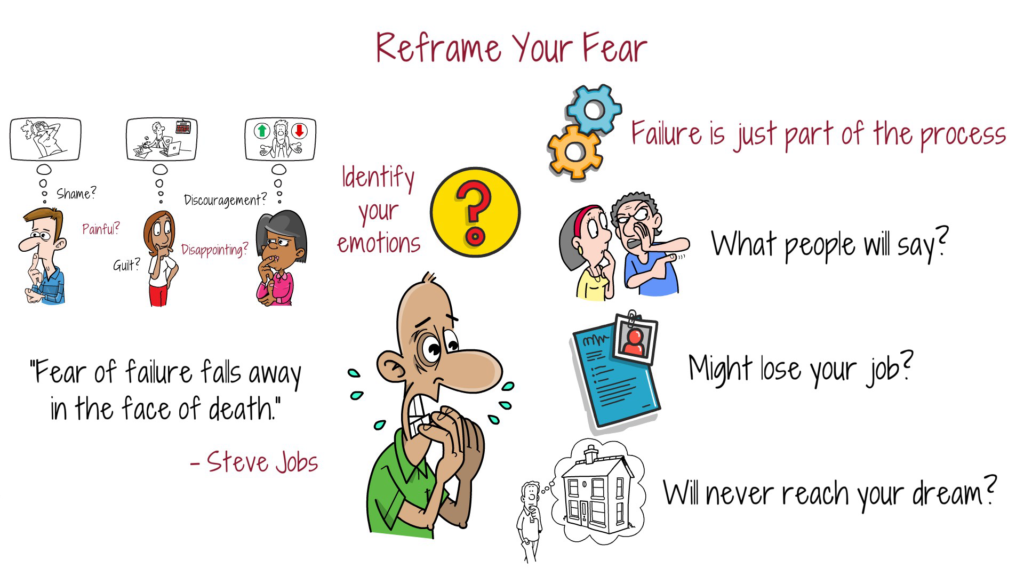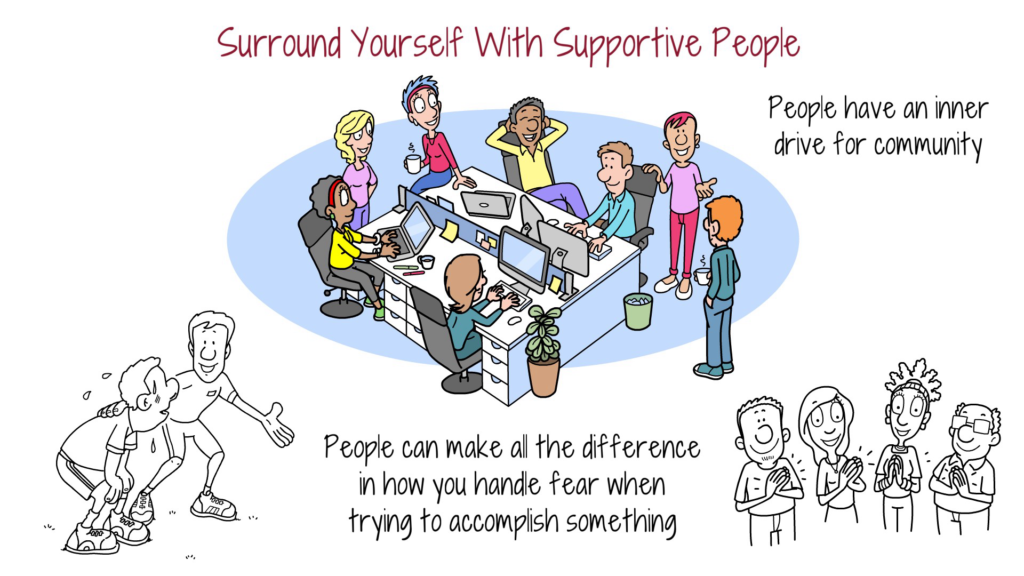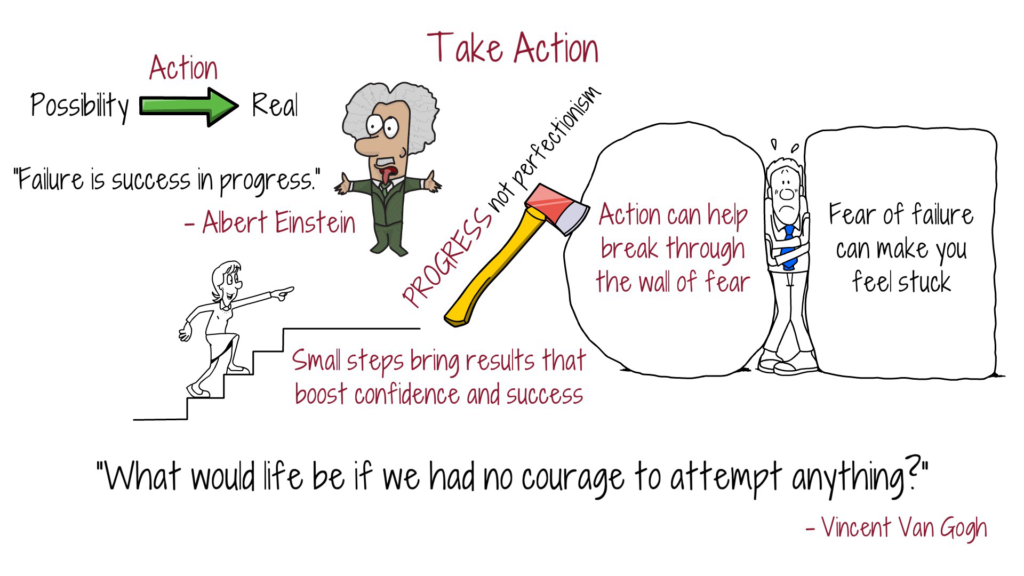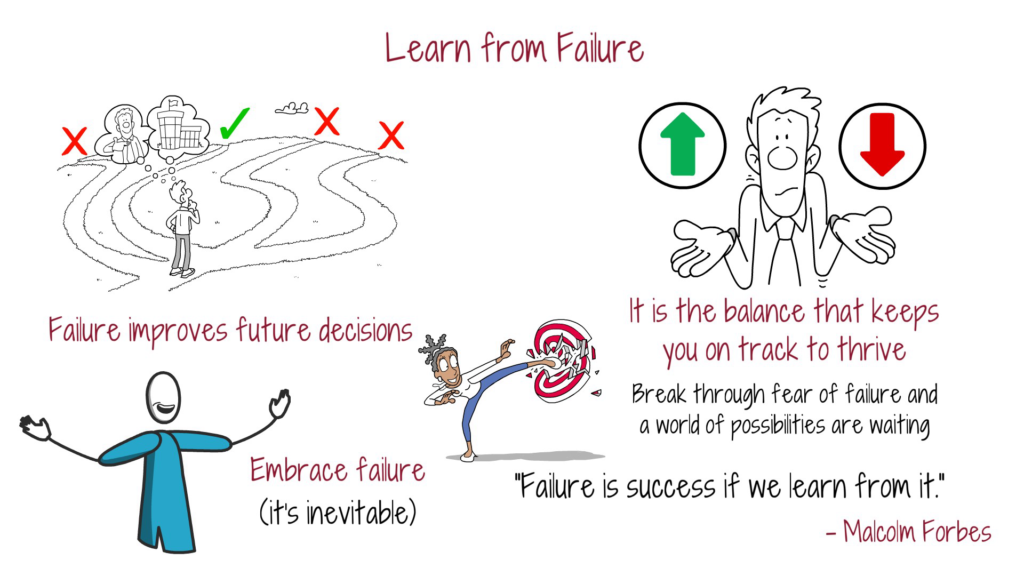Failure is inevitable. It’s going to happen. And it’s probably more common than you think. If you haven’t experienced some form of failure in your life, you probably haven’t stepped too far outside of your comfort zone.
Since failure is something that happens to everyone at some point, you may find some degree of comfort knowing you’re not alone. But if failure is so common, why does it feel so big? Why is failure so hard to accept? Well, maybe it’s not so much the failure itself, but the fear of it. Maybe it’s so difficult because of all of the emotions associated with it.
If you’re afraid of failing, expecting it, ruminating about it, focusing on it, you may be suffering more than you need to. Fear of Failure is like a brick wall, holding you back from reaching your goals on the other side.
American Writer Elbert Hubbard said,
“The greatest mistake you can make in life is to be continually fearing you will make one.”
Reframe Your Fear
What are you really afraid of? Are you concerned about what people will say if you fail? Are you afraid you might lose your job? Are you afraid of never achieving a long term dream? Try to identify your emotions around the thoughts of failure.

Everyone views failure differently. It’s often very personal, and can affect your feelings of self worth and confidence. For example, not getting the job, not meeting a deadline, or failing to obtain a cherished dream can often result in feelings of shame, guilt or discouragement.
When you fail to meet an expectation it can be disappointing, or even painful. It can affect your motivation to continue to try again. But changing the way you think about the situation might help.
Businessman Steve Jobs once stated,
“Fear of failure falls away in the face of death.”
When you think about what’s really important in the big picture of life, you might start to look at failure in another way. Rather than something to be feared, you may be able to see it as part of the process.
Failure can often bring about new opportunities, alternative methods, and second chances. For example, you might find that the job you didn’t get gave you time to review your skills and find something that is better suited to you. If you didn’t meet the deadline for a project, use it as a teachable moment, spotlighting the areas where you need to improve.
Failure can happen for many reasons. Maybe you didn’t have the right tools or experience. Maybe it was a matter of something out of your control. Maybe you neglected to make the most of your time and energy. Try making an assessment of what went wrong, and then see how you can reframe the situation into something positive.
By thinking about what failure means to you, you might find that instead of a debilitating crisis, it can become a stepping stone for greater success. By not taking it personally, you may find yourself stronger, wiser and more able to do better next time.
“Fear” and “excitement” can be two sides of the same coin. Fear of failure can be scary, but do what you need to do anyway. Reframe “fear” into “excitement”, “nervousness” or the “unknown”. And then do your best.
Visualize Success
Fear can creep into your best laid plans. Doubt, worry and procrastination can wreak havoc if you let them. When fear of failure is knocking at your door, your best bet might be to ignore it.
Fear of failure often stems from self-doubt and overthinking. Overcome these barriers by reading our article on self-doubt and overthinking.

Training your brain to think positive thoughts can be a helpful tool to dispel the fear of failure. Catch your negative self-talk, and say to yourself, “Delete.” Immediately redirect your thinking to something else that reinforces a positive outcome. By holding only positive thoughts about your goal, you will be more likely to succeed.
For example, some athletes have used mental imagery techniques to improve their skills and enhance their physical performance. According to research at the US Olympic Training Center in Colorado, over 90% of their athletes used imagery in their sport. By vividly imagining the actions taken in an event, and visualizing mastery and success, they could improve their competitive skills.
Visualization can be done in many different ways. Some techniques involve putting together a vision board. Gather pictures and words that depict the goal you are working toward and put them together in a collage. Put it somewhere that it will be seen often. Notes and cards that have inspirational thoughts written on them can also be helpful to keep you in the mindset of fearless momentum.
Another example of visualization is through meditation. Picture yourself reaching your goal. Be clear and specific, encompassing as many of your physical senses as possible to bring clarity and focus to your visualization. Put yourself in the center of the scene, rather than viewing it as an outsider. When you visualize the event through your own eyes, instead of watching it happen like in a movie, your brain perceives it as if it’s really happening to you.
Inventor Henry Ford stated,
“Obstacles are those frightful things you see when you take your eyes off your goal.”
Surround Yourself With Supportive People
People have an inner drive for community. From the earliest times of human development, it was important to live and interact with other humans. Our safety and survival depended on it. So it makes sense that we surround ourselves with people who mirror our own best interests.

Real friends and trusted associates can make all the difference in how you handle fear when trying to accomplish something. For example, if you know you can count on someone to help you when needed, you can feel more secure in knowing you have a safety net. People that will cheer you on when you’re struggling can help you to keep going when things get difficult.
Equally, knowing you can count on people to give you true and constructive feedback when you need advice, can help you navigate the confusing or rocky terrain. Having someone remind you why you want to accomplish a certain goal, and encouraging you not to give up, can lend extra support to help you to the finish line.
The old saying, “A burden shared is a burden halved” is a reminder that things can be easier when you have someone to help you through it. Failing at something isn’t nearly as scary when you have supportive people around to help you see what went wrong, and how to do better next time.
Take Action
Artist Vincent Van Gogh was quoted as saying,
“What would life be if we had no courage to attempt anything?”
Fear of failure can make you feel stuck or even make you afraid to try at all. But action can help break through the wall of fear that is holding you back.

Taking action shows you that progress is happening. For example, start with small steps that can bring results to boost your confidence and feel successful. Each time you complete a step, feelings of success can grow, while feelings of fear decrease. Focus on progress not perfectionism. And remember that even if you fail along the way, you can always adjust your plans and keep trying.
Albert Einstein said,
“Failure is success in progress.”
As long as you’re moving forward, you haven’t failed.
You can visualize a goal or dream, but it’s when you take action to achieve it, that the possibility becomes real. Take calculated risks. Don’t be foolish, but rise above what’s just a “safe” bet.
Learn from Failure
Embrace failure. It’s going to happen, so resisting never makes it better. Know that there will be failures, but also successes. Keep it in perspective and learn from your mistakes.

Entrepreneur Malcolm Forbes stated,
“Failure is success if we learn from it.”
Failure can help you to make better decisions next time, and improve future outcomes.
Final Thoughts
Life is not perfect. It’s going to have ups and downs. But failure is not the end. It’s the balance that keeps you on track to thrive with humility, wisdom, and courage. So celebrate your successes, and learn from your failures.
When you break through the Fear of Failure, a world of possibilities are waiting for you!
